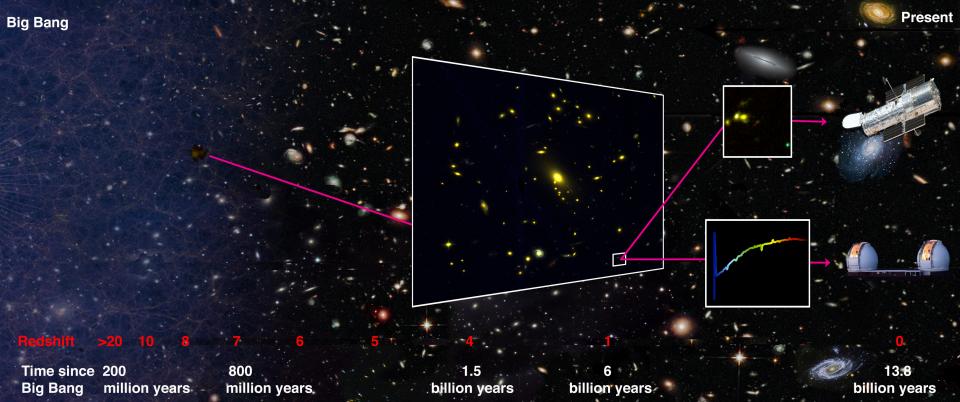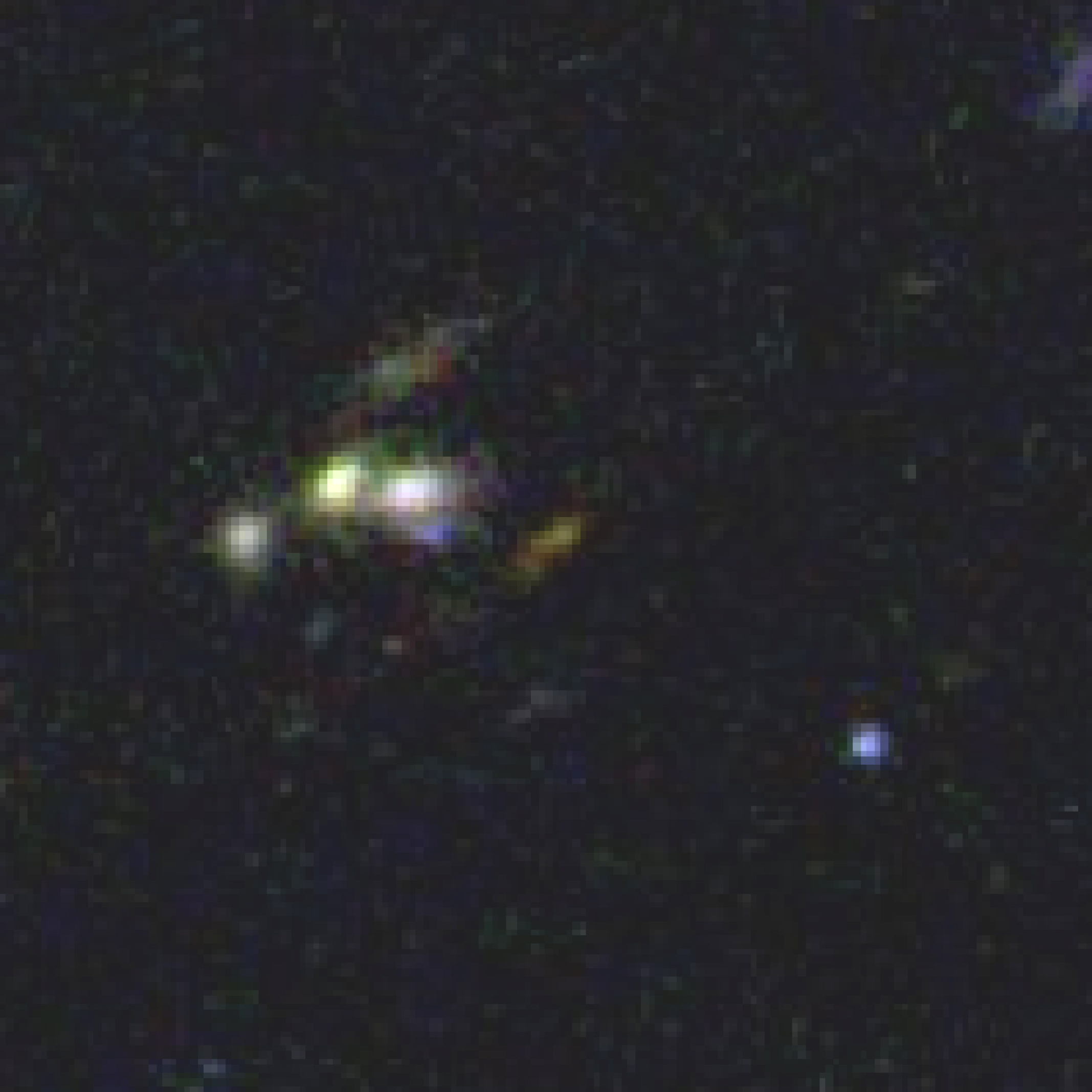Ultra-Distant Galaxy Is Exceptionally Unexceptional

The most distant galaxies in the universe — the very first ones to form after the Big Bang — are generally too far away for modern instruments to detect, unless they are unusually bright when compared with most of their peers. But a lucky confluence of circumstances has allowed a group of scientists to study an ultra-distant galaxy that is exceptionally unexceptional.
Known as MACS1423-z7p64, the light from this newly discovered galaxy traveled for 13.1 billion years before finally reaching Earth. That means this galaxy formed less than 1 billion years after the Big Bang (which took place about 13.78 billion years ago), as part of the very first generation of galaxies to form in the universe.
The astronomers were able to detect this extremely distant object only because its light was magnified by a natural phenomenon called gravitational lensing, in which the light from a distant object is magnified by a very massive object that lies closer to the observer. [Images: Peering Back to the Big Bang & Early Universe]

In this case, the cosmic magnifying glass is a galaxy cluster that lies between Earth and MACS1423-z7p64. (The movie "Interstellar" beautifully illustrated how a massive object can bend light around itself.)
"Other most distant objects are extremely bright and probably rare compared to other galaxies," Austin Hoag, a graduate student at the University of California, Davis, who led the study, said in a statement from the university. "We think this is much more representative of galaxies of the time."
The discovery is significant because that first generation of galaxies helped initiate a major transition that the universe underwent around this time, known as the epoch of reionization.
Get the Space.com Newsletter
Breaking space news, the latest updates on rocket launches, skywatching events and more!
Just before the first stars and galaxies formed, the universe was filled with a fog of hydrogen atoms that blocked certain wavelengths of light, including the visible range of light seen by the human eye. That fog was lifted when stars began to burn, releasing radiation that freed electrons from those hydrogen atoms, leaving behind hydrogen "ions" (an atom that has lost electrons). Thus, the lifting of the hydrogen fog is known as the "epoch of reionization."
Galaxies are thought to have played a large role in ionization (simply because they produced lots of stars), but there are many questions that remain unanswered about this period in the universe's history. For example, it's unclear exactly when the epoch took place or how long it took, and if the ionization was uniform across the galaxy or (more likely) occurred in patches around galaxies.
The epoch of reionization "was likely not driven by the few, rare, [bright] galaxies" that have typically been studied at such great distances from Earth, but instead by "the average, typical galaxies," Hoag told Space.com.
"That's why we're interested in looking at [galaxies like MACS1423-z7p64] in particular," he said. "Because if we can learn about them, then we can learn about how this transition took place."
Hoag is part of an international team that used the Hubble Space Telescope to survey the area around nearby massive galaxies clusters, looking for light from distant galaxies that had been magnified by the clusters via gravitational lensing. MCS1423-z7p64 was one distant galaxy that was positioned in such a way that its light passed through that massive cosmic lens. The team then conducted follow-up studies with the Keck telescope to determine how far the light from MCS1423-z7p64 had traveled. Hoag said the survey is ongoing and the team may discover even more of these distant galaxies, which is essential for piecing together a picture of "what was going on in the entire universe at that time."
Even though the light from MCS1423-z7p64 has been magnified, the signal is still extremely faint and difficult to study. In addition, the nonionized hydrogen gas that surrounds MCS1423-z7p64 absorbs the wavelength of light that Hoag and his colleagues need to use to measure the distance the light from MCS1423-z7p64 has traveled.
"We'll be studying it much more in the future and we should be able to learn more in those observations," Hoag said. "This was the first [step] — just confirm that it's there and measure the distance."
With follow-up observations, the team hopes to learn new things about the epoch of reionization and the characteristics of those early, average galaxies.
Follow Calla Cofield @callacofield. Follow us @Spacedotcom, Facebook and Google+. Original article on Space.com.
Join our Space Forums to keep talking space on the latest missions, night sky and more! And if you have a news tip, correction or comment, let us know at: community@space.com.

Calla Cofield joined Space.com's crew in October 2014. She enjoys writing about black holes, exploding stars, ripples in space-time, science in comic books, and all the mysteries of the cosmos. Prior to joining Space.com Calla worked as a freelance writer, with her work appearing in APS News, Symmetry magazine, Scientific American, Nature News, Physics World, and others. From 2010 to 2014 she was a producer for The Physics Central Podcast. Previously, Calla worked at the American Museum of Natural History in New York City (hands down the best office building ever) and SLAC National Accelerator Laboratory in California. Calla studied physics at the University of Massachusetts, Amherst and is originally from Sandy, Utah. In 2018, Calla left Space.com to join NASA's Jet Propulsion Laboratory media team where she oversees astronomy, physics, exoplanets and the Cold Atom Lab mission. She has been underground at three of the largest particle accelerators in the world and would really like to know what the heck dark matter is. Contact Calla via: E-Mail – Twitter
